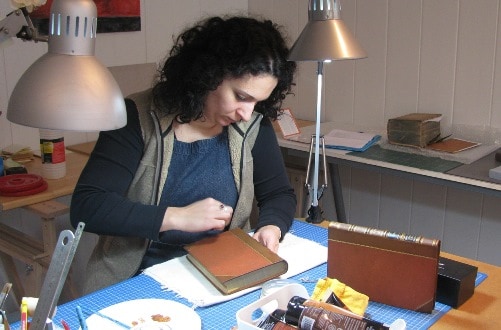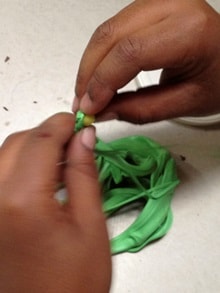
Repairing and unrepairing books
2 March 2014
Reza Aslan on religion and society
25 March 2014

What do you think are the most important steps to handwriting success?
Many children, eager to begin writing and drawing, develop unusual grasping patterns because their little hands are not ready for such sophisticated writing tools. Giving young preschoolers lots of time to get ready for writing is important. Allowing them to ample time to develop shoulder and wrist stability through crawling, climbing and playing on the floor helps them when it comes time to hold a tool. Also giving them time to explore a variety of materials such as clay, squishy sand, crunchy leaves and wet finger paints gives them the sensory experiences to help them learn how to hold a tool. Lastly, begin with developmentally appropriate, multi-sensory and sequentially organized teaching methods in order to be certain that letter formation and handwriting is adequately taught.
What are some fun activities that parents/teachers can do with children to get them ready for handwriting?
Handwriting is one of the more complex motor planning activities that we learn in our life times. Let’s have fun getting ready to write! Begin with large muscles and body awareness, then work down to the little muscles in the hands, fingers and eyes!
First, begin with log rolling, jumping jacks or frog jumps to activate their movement sense. Next, use muscle resistance to wake up their muscles…downward dog, crab position on hands and feet and tug-of-war or push-of-war helps teach how to gauge the “just right” amount of pressure. Then getting hands ready can begin with pulling on each finger as if you are removing a glove, then thumb and index fingers of right hand interlocked with left hand and try to pull apart (try each thumb-finger combination) and lastly, stringing things such as pasta, beads or buttons (large for young children) on thick/stiff materials such as a straw, pipe cleaner or pencil.
Eyes are large part of handwriting too! They help to double check for accuracy and exercising them to build stability is important too. Place an object in the middle of the room at eye level, have the child pace on an imaginary 6-foot line while maintaining a fixed gaze on the object (e.g. puppet/pinwheel/balloon) or laying on their back in a darkened room, follow the flashlight spot moving slowly from left to right, top to bottom…just like our letters are formed! Now they are ready to write!
What are some myths about handwriting that you’d like to debunk?
First, understanding that handwriting is complex and not just simply acquired is important. It is the major form of expression in school yet teachers have very little time available to actually teach it anymore. Next, computers are important in our schools but I do not believe they will completely replace our handwritten form of expression. Research supports that it is still essential to teach handwriting for an integrated form of the written letter/word/sentence formation. Lastly, if there is a problem with handwriting acquisition, and many supports have been trailed unsuccessfully, then a through evaluation is recommended. An occupational therapist, psychologist, neuropsychologist, developmental educator or psychomotrician can complete this type of evaluation.


